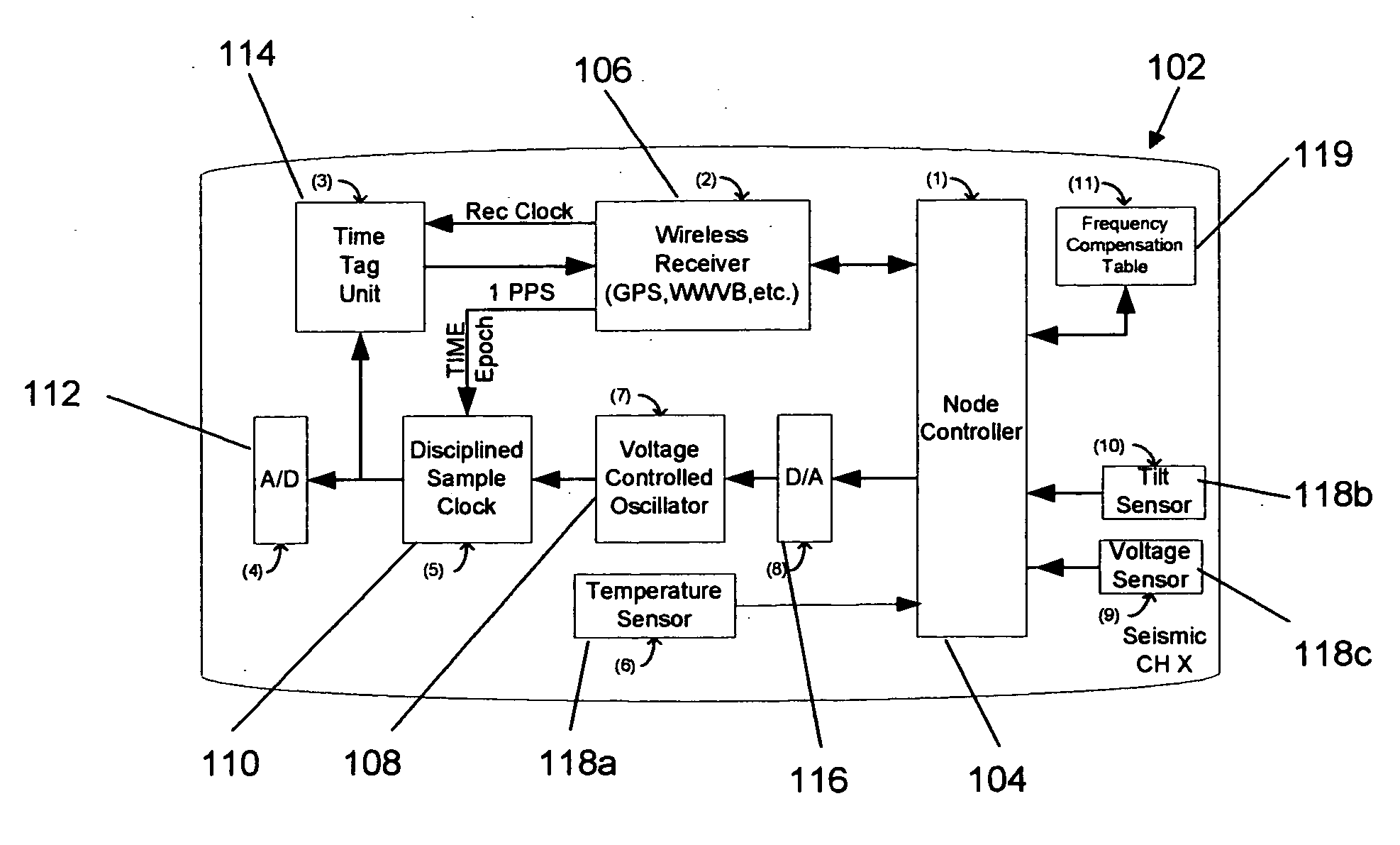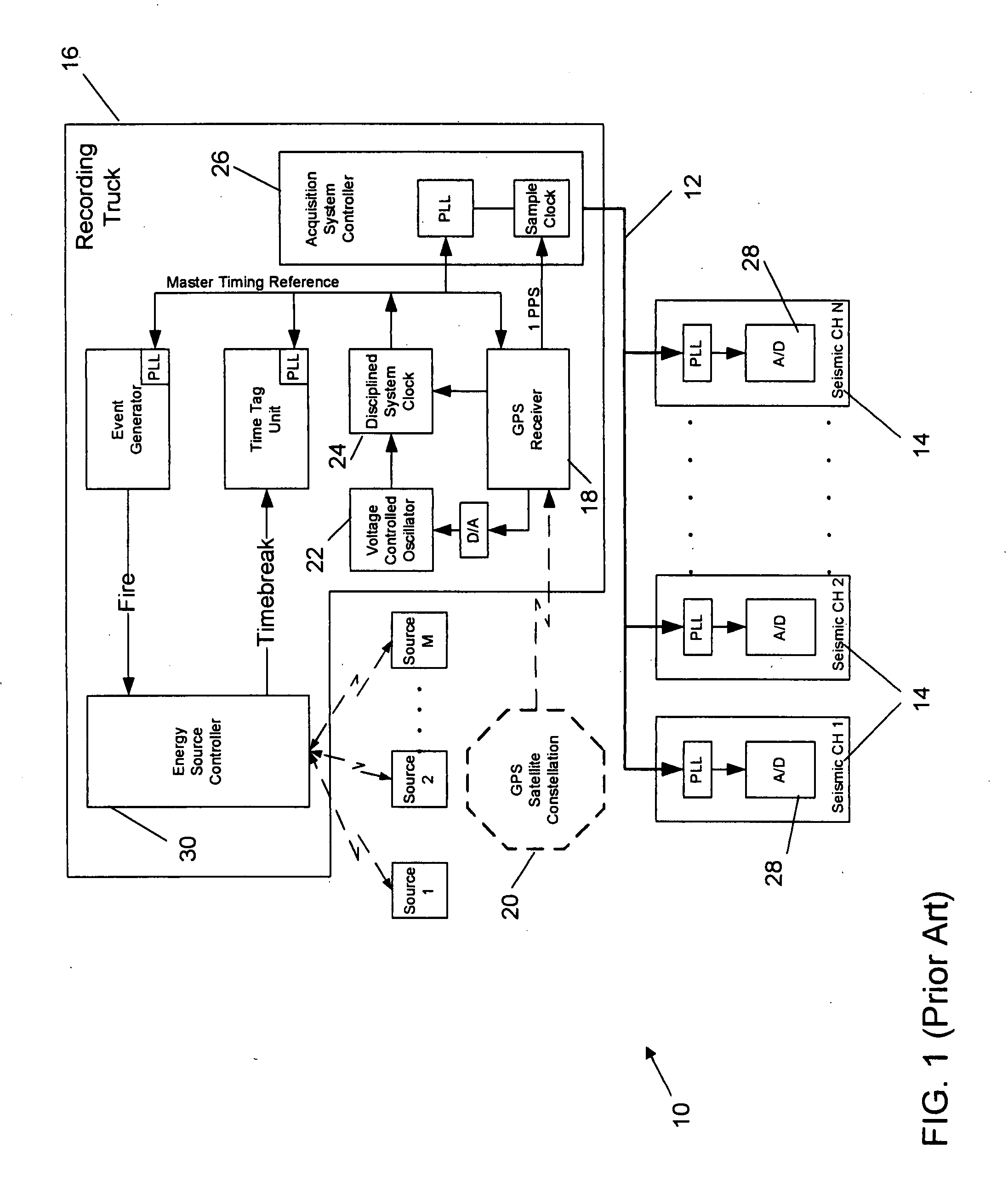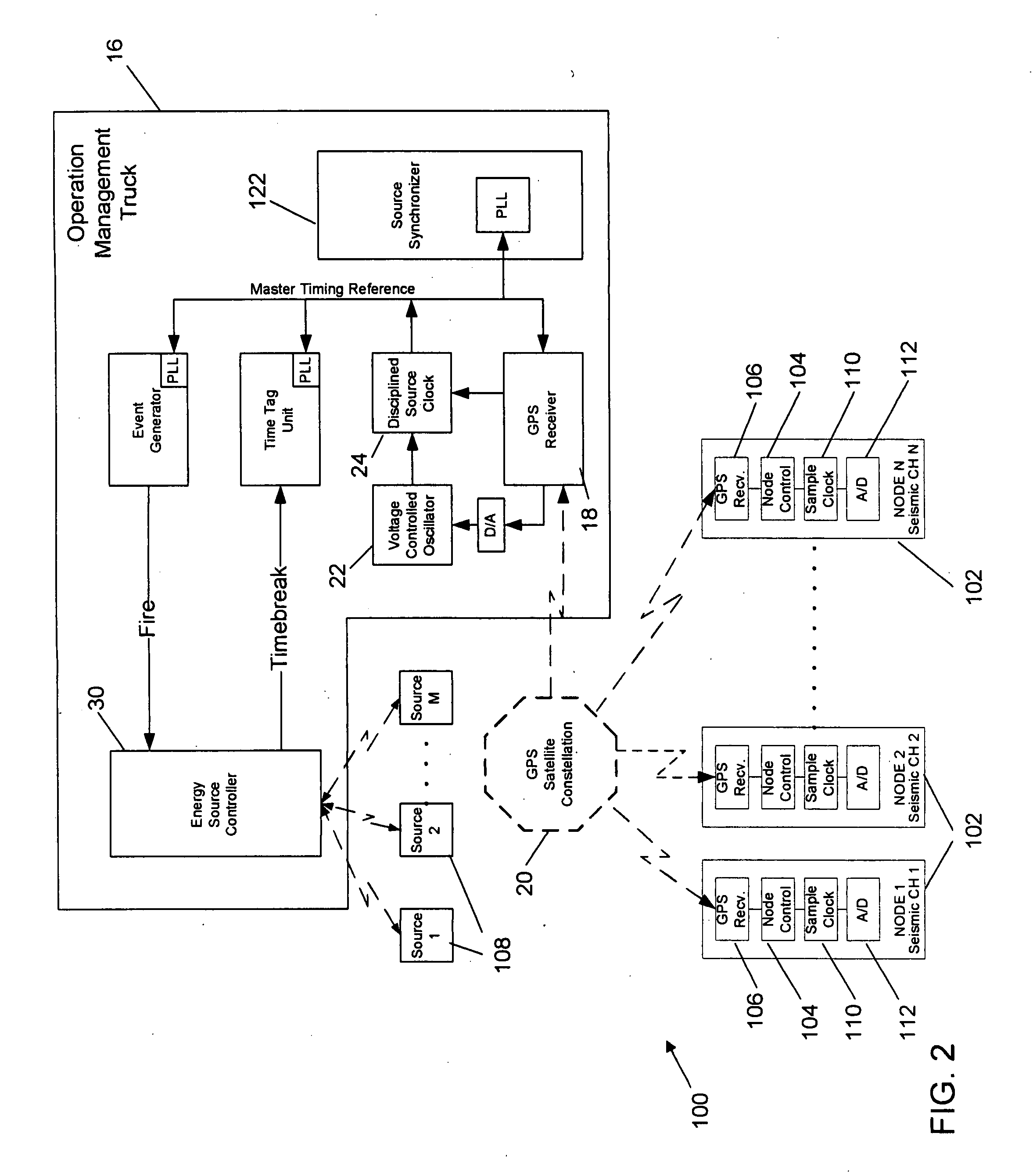Method and apparatus for correcting the timing function in a nodal seismic data acquisition unit
a nodal seismic data acquisition and timing function technology, applied in the field of seismic exploration, can solve the problems of large power consumption, large power consumption, and system with continuously operating functions, and achieve the effects of reducing drift value, minimizing distortion in sampled data, and high vco stability
- Summary
- Abstract
- Description
- Claims
- Application Information
AI Technical Summary
Benefits of technology
Problems solved by technology
Method used
Image
Examples
Embodiment Construction
[0031]The invention is implemented in a seismic acquisition unit such as that shown in FIG. 2, namely wireless nodal seismic acquisition unit. Specifically shown in FIG. 2 is a system level architectural block diagram of a seismic survey system 100 that utilizes a distributed time base from an external timing reference to synchronize a plurality of autonomous, individual seismic data acquisition units 102. The distributed time base insures that all individual seismic data acquisition units 102 are sequenced during the acquisition cycle by the same time reference. While the seismic survey system 100 of FIG. 2 is similar to the prior art seismic survey system 10 of FIG. 1, the system 100 of FIG. 2 is autonomous, without any wired or wireless physical layer connection with the centralized base unit 16, i.e., no control signal from the base unit. Rather, each individual seismic acquisition unit 102 includes a wireless receiver on board that communicates with an external, precision time ...
PUM
 Login to View More
Login to View More Abstract
Description
Claims
Application Information
 Login to View More
Login to View More - R&D
- Intellectual Property
- Life Sciences
- Materials
- Tech Scout
- Unparalleled Data Quality
- Higher Quality Content
- 60% Fewer Hallucinations
Browse by: Latest US Patents, China's latest patents, Technical Efficacy Thesaurus, Application Domain, Technology Topic, Popular Technical Reports.
© 2025 PatSnap. All rights reserved.Legal|Privacy policy|Modern Slavery Act Transparency Statement|Sitemap|About US| Contact US: help@patsnap.com



